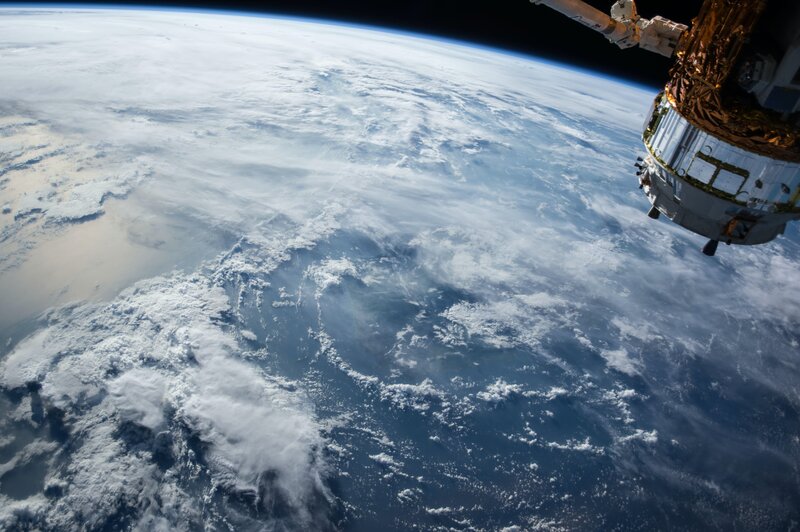From Earth to Space: Possibilities of Renewable Energy
The need for energy on Earth has never been greater, yet new technology is required for the supply to keep up with the demand. In order to better serve its consumers and to lessen carbon emissions and other environmental concerns, the terrestrial energy industry is benefiting from technologies developed for space missions, such as power supply and management systems. What is more, renewable energy can be used in various areas, and in modern days even flying on it can become a reality.
A long time ago when planes were only on the edge of being introduced to humanity nobody even dreamed of them having zero waste. Nowadays the desires come true. By making airplanes more compatible with renewable energy sources, innovative new designs could assist the aviation sector in becoming net zero.
The hope for the future of aviation is totally electric, with long-distance flight, to start. However, the typical "10 years away" category still applies to electric aircraft. This is because commercial Li-ion batteries have a low energy-to-weight ratio of only 270 Wh kg-1, but long-distance flights are thought to require 800 Wh kg-1. Despite this, short-range pure electric flying has previously been accomplished. Amazingly, the cost of electricity for a 160 km local trip on the MagniX Cessna Caravan electric plane is about $6 USD as opposed to almost $400 USD if it were powered by liquid gasoline. In addition to being a "greener" alternative, electrification has financial benefits for airlines.

A hybrid airplane that uses high-energy fuels for takeoff and batteries for cruising might be a temporary fix until completely electric aircraft gain traction. Due to the chemical energy of the fuel, these electric-fuel hybrids have an advantage. In addition, gaseous or liquid chemical fuels combined with electricity from fuel cells might continually charge batteries, as is done in hybrid-electric vehicles. In place of the currently utilized kerosene in airplanes, renewable hydrogen or high-energy fuels like methanol, dimethyl ether, or oxymethylene dimethyl ethers might be used. Hydrogen, however, is not yet practical since it requires large containment apparatus, whilst high-energy compounds require additional auxiliary apparatus to obtain the hydrogen for application.
While others are dreaming and planning, the newest freighter from Boeing uses renewable energy. The main piece of information regarding this new freight plane is that Boeing will use renewable aviation jet fuel to transport the aircraft from the United States to Paris. The journey will represent the first transatlantic commercial jet flight using fuel sourced from living things. According to 747-8 Vice President and General Manager Elizabeth Lund, "this historic flight is a boost to aviation's efforts to cut carbon emissions and enhance efficiency in all areas of our industry." "By offering significant gains in fuel efficiency, lower carbon emissions, and less noise, the 747-8 Freighter fits in well with these initiatives."
Additionally, the latest news report that an Israeli start-up aspires to see the development of personal electric aircraft. To establish themselves in the expanding urban air mobility market, companies like Airbus, Boeing, Volo copter GmbH, and Joby Aviation have introduced electric vertical take-off and landing (eVTOL) prototypes during the past few years. But by developing an eVTOL that is intended for widespread usage, this Israeli start-up hopes to differentiate itself from the competition. The eVTOL developed by AIR has now finished its first unmanned flight, a significant milestone in its ongoing testing phase. The following test flight by AIR will contain a passenger. The company anticipates that its prototype, subject to regulatory approval, will be available for purchase at a starting price of about €140,000 at the end of 2024.

The further the more: future initiatives are to “harvest” solar energy in space. A scheme to gather solar energy from space and use microwaves to broadcast it to Earth seems too good to be true. But according to Martin Soltau, co-chairman of the Space Energy Initiative (SEI), a partnership of business and academia, it might occur as soon as 2035. A constellation of extremely large satellites will be launched into a high Earth orbit as part of the Cassiopeia project, which is being worked on by SEI. The satellites would capture solar energy once they were in place and send it back to Earth. According to him, the potential is practically limitless. In 2050, it could theoretically supply all the world's energy. "The Sun has a huge energy reserve, and there is enough space in orbit for satellites powered by solar energy. More energy is received annually in a small area of geostationary Earth orbit than is anticipated to be used by all of humanity in 2050 " says Mr. Soltau.
It is undoubtedly difficult to build solar power plants in space, but there may be benefits – at least for some nations. The proponents assert that a solar power station in Earth's orbit would generate 13 times as much energy as a comparable installation in the notoriously foggy United Kingdom. The power output of space-based solar power plants might easily reach gigawatts, matching that of nuclear power plants. Shotwick Solar Park located in northern Wales is the largest solar power facility in the United Kingdom, yet it only generates a measly 72.2 megawatts when insolation is at its highest. The gigawatt threshold is only reached by the largest solar plants in the world, which are enormous installations in some of the sunniest nations. For instance, the Bhadla solar farm in India, which generates up to 2.7 gigawatts and occupies 52 square miles (160 square kilometers) of land, is bigger than Manhattan.
The cost of constructing a solar power plant in space would be prohibitive. It can be asserted though that the plant would pay for itself much more quickly if constructed than any Earth-based renewable energy source.
